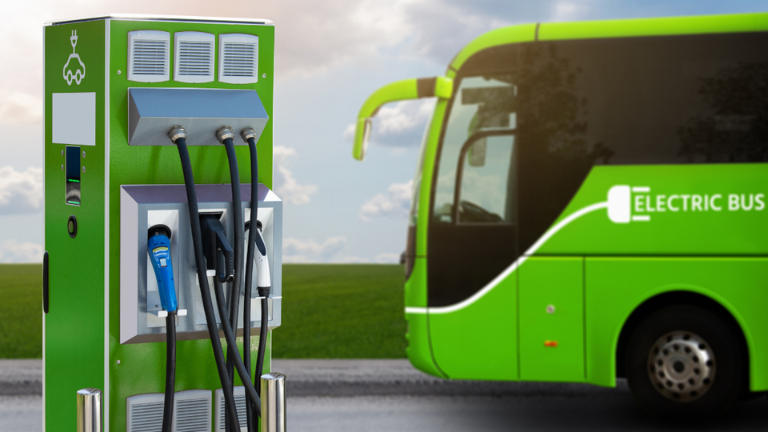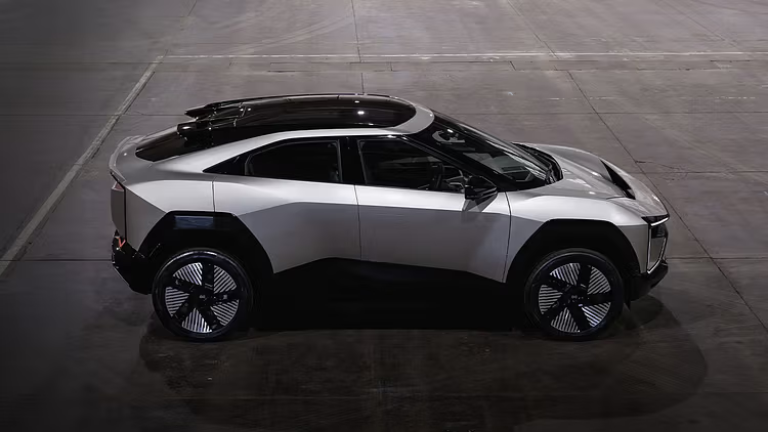India’s Public Transport Electrification to Reach 40% by FY30: ICRA
India is witnessing a significant transformation in its public transportation sector, with electric mobility playing a key role in the country’s shift towards sustainable transportation. According to credit rating agency ICRA, electric penetration in India’s public transport segment is expected to reach 30-40% by FY30.
This shift aligns with the Indian government’s long-term goal of reducing dependence on fossil fuels like petrol and diesel while promoting cleaner and cost-efficient alternatives. The adoption of electric buses (e-buses), electric three-wheelers (e3Ws), electric light commercial vehicles (e-LCVs), and electric two-wheelers (e2Ws) is expected to drive this change, fueled by government incentives, lower ownership costs, increasing demand, and advancements in EV technology.
Government Initiatives Fueling EV Growth
To encourage EV adoption, the Government of India (GoI) has launched several policies and initiatives. One of the key programs is the PM e-Bus Sewa scheme, designed to accelerate the integration of electric buses into the urban transport network.
Additionally, factors such as:
✅ Government subsidies reducing the upfront cost of EVs
✅ Development of advanced battery technology
✅ Lower operational costs compared to diesel and petrol vehicles
✅ Growing demand for sustainable mobility solutions
✅ Support for domestic EV manufacturers and auto components
…are all contributing to the increasing penetration of electric public transportation in India.
Electric Three-Wheelers (e3Ws) to Lead EV Adoption
While EV penetration in India is still at single-digit levels, it is expected to grow significantly in the coming years. According to ICRA estimates, by 2030, the breakdown of EV penetration in different transport segments will be:
🔹 Electric three-wheelers (e3Ws): 40% penetration
🔹 Electric buses (e-buses): 30% penetration
🔹 Electric light commercial vehicles (e-LCVs): 12-16% penetration
🔹 Electric two-wheelers (e2Ws): 25% penetration
🔹 Electric passenger cars: 15% penetration
As of FY24, the penetration levels are significantly lower:
✅ e-Buses: 7%
✅ e3Ws: 9%
✅ e-LCVs: Negligible
This data highlights the tremendous growth potential for electric vehicles in India, particularly in the public transport and commercial mobility segments.
Factors Driving Electric Three-Wheeler Adoption
The electric three-wheeler segment is expected to dominate due to its cost efficiency, lower operational expenses, and suitability for urban transport. The demand for e3Ws is rising due to:
🔹 Affordable pricing compared to traditional auto-rickshaws
🔹 Government subsidies and incentives
🔹 Growing popularity of last-mile delivery solutions (e-commerce & food delivery)
🔹 Rising fuel prices making petrol/diesel vehicles less viable
With 40% penetration projected in e3Ws by 2030, this segment is expected to lead India’s EV revolution in public transport.
India’s Auto Component Industry to Invest INR 25,000-30,000 Cr
As India accelerates EV adoption, the automotive component industry is preparing for massive investments in manufacturing and technology. ICRA estimates that the auto components sector will incur a capital expenditure (capex) of INR 25,000-30,000 crore by FY26.
This investment will focus on:
✅ Expanding production capacity to meet rising EV demand
✅ Enhancing localization of key EV components
✅ Developing advanced technologies for electric mobility
Currently, only 30-40% of India’s EV supply chain is localized. While components like traction motors, control units, and battery management systems have seen growing localization, battery cells—constituting 35-40% of an EV’s cost—are still fully imported. This presents a significant opportunity for domestic manufacturing.
Export Opportunities for India’s Auto Sector
With India’s auto component exports contributing nearly 30% of the industry’s revenue, the sector is poised for global growth. Although vehicle registration growth remains slow in key international markets, Indian manufacturers are set to benefit from:
✅ Increasing supplies to global EV platforms
✅ Vendor diversification by international OEMs
✅ Higher value addition through localized manufacturing
Furthermore, India’s metal casting and forging industry is expected to grow as several EU-based plants face shutdowns due to economic challenges. This creates an opportunity for India to become a key supplier of EV components globally.
Challenges to EV Growth in India
While the future looks promising, the EV sector in India still faces several challenges:
⚠ High initial cost of EVs despite subsidies
⚠ Limited charging infrastructure in many cities
⚠ Dependence on imported battery cells
⚠ Slow pace of EV financing options
Addressing these issues through policy improvements, increased investments, and battery localization will be crucial for the sustained growth of EV adoption in India.
India’s EV Growth on the Fast Track
India’s journey towards electric mobility is gaining momentum, with the public transport sector playing a vital role in this transformation. By 2030, electric penetration is expected to reach 40% in e3Ws, 30% in e-buses, and 12-16% in e-LCVs.
Government policies, falling battery prices, increasing localization, and rising consumer awareness will continue to fuel India’s EV revolution. At the same time, auto component manufacturers are gearing up for massive investments to support this shift, boosting both domestic production and export potential.
With a strong government push, the Indian EV market is well on its way to becoming a global hub for electric mobility. As infrastructure improves and adoption rises, India is poised to lead the world in sustainable transportation solutions.
🚗⚡ The future of India’s public transport is electric—faster, cleaner, and more sustainable!




